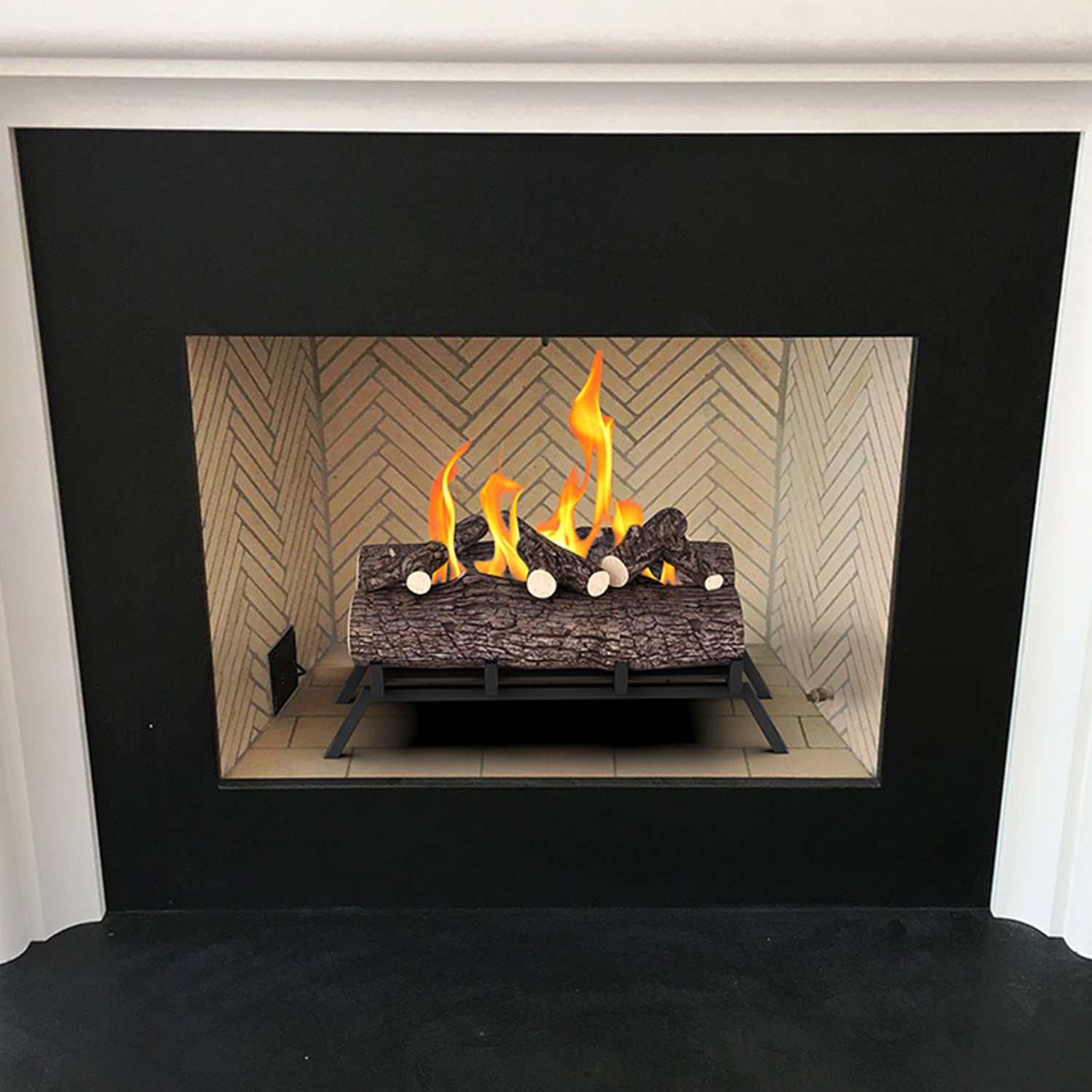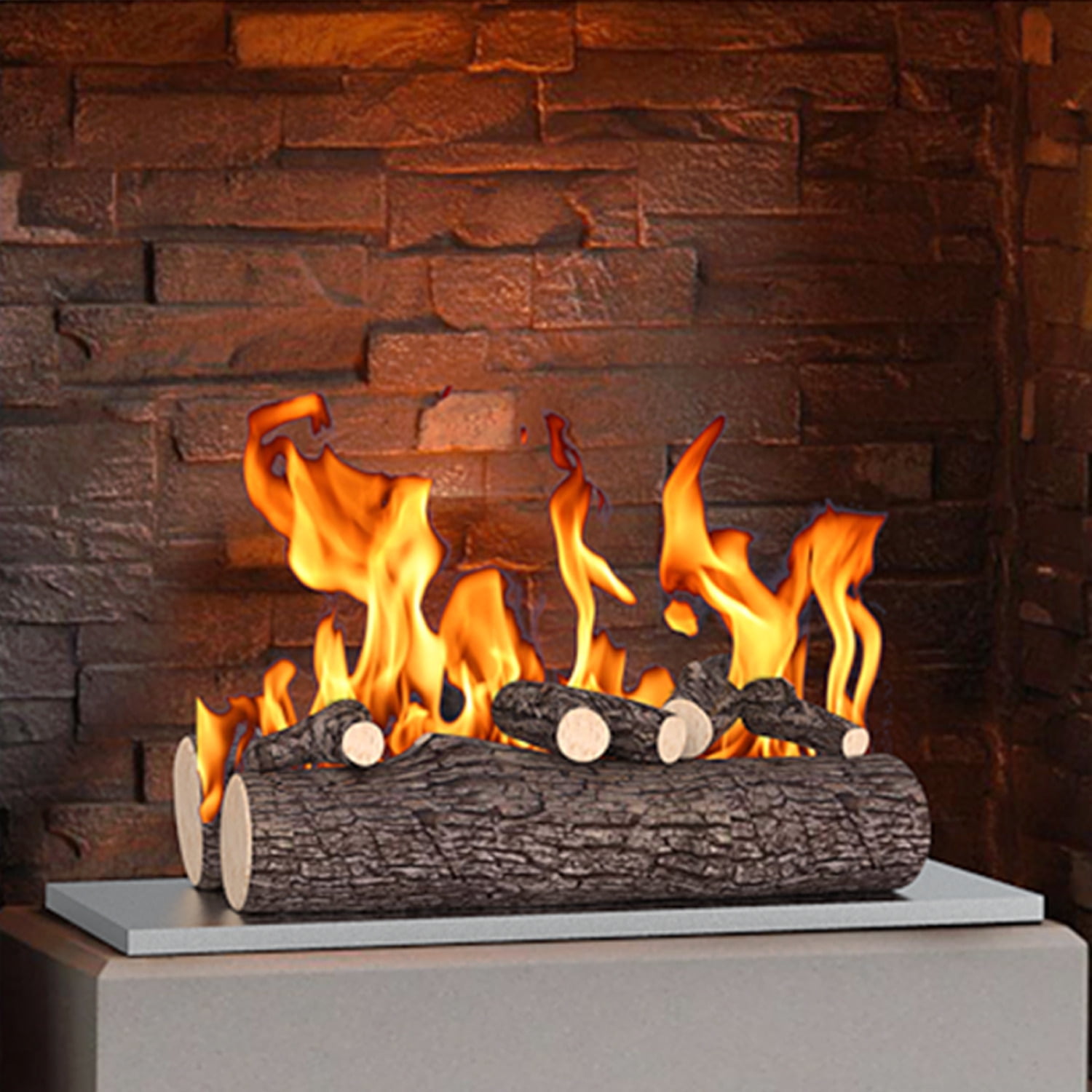Ethanol gel fireplace inserts offer a stylish and practical alternative to traditional wood-burning or gas fireplaces. These inserts use ethanol gel fuel, which burns cleanly without producing smoke, ash, or harmful emissions. They are easy to install, require no chimney or venting, and provide a realistic flame effect, making them ideal for apartments, modern homes, and commercial spaces. Whether you want to add warmth or create a cozy ambiance, ethanol gel fireplace inserts combine functionality with aesthetic appeal.
How Ethanol Gel Fireplace Inserts Work
Ethanol gel fireplace inserts operate by burning a bioethanol-based gel fuel, which is poured into a specially designed burner. The fuel ignites easily with a long lighter or match, producing a steady flame that resembles a real fire. Since the combustion process only releases water vapor and minimal carbon dioxide, no ventilation is required. This makes ethanol gel inserts a safe and eco-friendly option for indoor use.
The flame intensity can be adjusted by controlling the amount of fuel used or partially covering the burner. Unlike traditional fireplaces, there’s no need for wood, gas lines, or electrical connections. The gel fuel burns for about 2-4 hours per can, depending on the size of the insert and the fuel quantity. Once the fuel is exhausted, the flame extinguishes on its own, leaving no residue behind.
Maintenance is simple—just wipe the burner with a damp cloth after it cools. Since there’s no soot or creosote buildup, cleaning is minimal. Ethanol gel inserts are also portable, allowing you to move them between rooms or even take them outdoors for patio use. Their versatility and ease of use make them a popular choice for those who want a hassle-free fireplace experience.
Benefits of Using an Ethanol Gel Fireplace Insert
One of the biggest advantages of ethanol gel fireplace inserts is their clean-burning nature. Unlike wood-burning fireplaces, they don’t release harmful particulates or require a chimney, making them safer for indoor air quality. They also eliminate the risk of sparks or flying embers, reducing fire hazards. This makes them suitable for homes with children, pets, or allergy sufferers.
Another benefit is their installation flexibility. Since no venting is needed, these inserts can be placed almost anywhere—on tabletops, inside existing fireplace cavities, or as standalone units. Renters and homeowners alike appreciate the fact that they don’t require permanent modifications. Additionally, ethanol gel fireplaces come in various designs, from sleek modern styles to rustic finishes, allowing them to complement any décor.
Cost-effectiveness is another key advantage. While the initial purchase price may vary, the ongoing expenses are low compared to wood or gas fireplaces. Ethanol gel fuel is affordable and widely available, and there are no additional costs for chimney cleaning or gas line installations. The simplicity and efficiency of these inserts make them an attractive heating solution for those who want ambiance without the upkeep.

Design and Aesthetic Appeal
Ethanol gel fireplace inserts are available in a wide range of styles to match different interior designs. Some models feature minimalist stainless steel frames, while others mimic the look of traditional fireplaces with faux logs and stone finishes. The flames produced are realistic, creating a warm and inviting atmosphere without the mess of a wood fire.
Many inserts are designed to fit into existing fireplaces, giving old hearths a modern upgrade. Freestanding models can serve as striking centerpieces in living rooms, dining areas, or even outdoor spaces. Some designs include decorative elements like ceramic logs or glass beads to enhance the visual effect. The ability to customize the appearance ensures that there’s an option for every taste.
Since these fireplaces don’t require bulky venting systems, they maintain a sleek and unobtrusive profile. This makes them ideal for small apartments or homes where space is limited. The clean lines and contemporary finishes of many ethanol gel inserts contribute to a sophisticated look, making them as much a décor piece as a functional heater.
Safety Considerations and Best Practices
While ethanol gel fireplace inserts are generally safe, proper usage is essential to prevent accidents. Always place the insert on a stable, non-flammable surface away from curtains, furniture, or other combustible materials. Keep a safe distance between the flame and any surrounding objects—manufacturers usually provide clear guidelines on spacing.
Never refill the burner while it’s still hot or in use. Wait until the unit has completely cooled before adding more fuel. It’s also important to use only high-quality ethanol gel fuel designed for fireplaces, as other types of alcohol can produce unpredictable flames or toxic fumes. Always supervise the fireplace when in use, especially around children or pets.
Having a fire extinguisher nearby is a good precaution, though ethanol fires can often be smothered with a damp cloth if small. Proper ventilation, though not required for combustion, helps disperse any residual fumes. Following these safety measures ensures a worry-free experience while enjoying the warmth and beauty of an ethanol gel fireplace.
Comparing Ethanol Gel Inserts to Other Fireplace Types
Ethanol gel fireplace inserts differ significantly from wood-burning, gas, and electric fireplaces. Unlike wood fireplaces, they don’t produce smoke, ash, or creosote, eliminating the need for chimney cleaning. Gas fireplaces require professional installation and a gas line, while ethanol inserts are plug-and-play with no utility hookups needed.
Electric fireplaces may offer similar convenience, but they lack the authentic flame effect of burning fuel. Ethanol gel inserts provide real flames without the need for electricity, making them functional during power outages. However, they don’t generate as much heat as wood or gas options, so they’re better suited for supplemental heating rather than primary warmth.
Cost-wise, ethanol gel inserts are often more affordable upfront than gas or built-in electric units. However, the recurring cost of fuel should be factored in. For those prioritizing ambiance and simplicity over high heat output, ethanol gel fireplaces present a compelling middle ground.
Maintenance and Longevity of Ethanol Gel Inserts
Maintaining an ethanol gel fireplace insert is straightforward. Since there’s no ash or soot, cleaning involves simply wiping the burner with a damp cloth after each use. Inspect the burner periodically for any residue or blockages that could affect flame quality. Most inserts are made from durable materials like steel or ceramic, ensuring long-lasting performance.
The lifespan of an ethanol gel insert depends on usage and care. High-quality models can last for years with proper maintenance. The fuel cans themselves have a long shelf life if stored in a cool, dry place. Unlike gas fireplaces, there are no mechanical parts to replace, reducing long-term upkeep costs.
To maximize longevity, avoid overfilling the burner and always follow the manufacturer’s instructions. Some inserts come with warranties, providing added peace of mind. With minimal effort, an ethanol gel fireplace can remain a reliable and attractive feature in your home for many seasons.
Are ethanol gel fireplace inserts safe for indoor use?
Yes, ethanol gel fireplace inserts are safe for indoor use when operated correctly. They burn cleanly, producing only water vapor and minimal carbon dioxide, with no harmful smoke or fumes. Since no venting is required, they can be used in well-ventilated rooms without risk of carbon monoxide buildup. However, it’s important to follow safety guidelines, such as keeping flammable materials away and never leaving the flame unattended.
Unlike wood fires, there’s no risk of sparks or flying embers, making them safer around children and pets. The gel fuel is also less prone to accidental spills compared to liquid ethanol. Always purchase inserts from reputable manufacturers and use only approved fuel to ensure safety. With proper precautions, these fireplaces provide a secure and enjoyable heating option.
How much heat do ethanol gel fireplace inserts produce?
Ethanol gel fireplace inserts generate a moderate amount of heat, typically enough to warm a small to medium-sized room. The exact output depends on the size of the burner and the amount of fuel used. On average, one fuel canister produces between 3,000 and 6,000 BTUs, which is sufficient for supplemental heating but not as powerful as wood or gas fireplaces.
The heat radiates outward in a gentle manner, creating a cozy atmosphere rather than intense warmth. This makes them ideal for taking the chill out of a room or adding ambiance. If primary heating is needed, combining the insert with other heat sources may be necessary. Their efficiency lies in their simplicity, offering warmth without complex installations or high energy costs.
Can ethanol gel inserts be used in existing fireplaces?
Yes, many ethanol gel inserts are designed to fit inside traditional fireplace openings, providing a modern upgrade without renovations. These inserts often come in sizes that accommodate standard hearth dimensions. By placing an ethanol gel burner inside an old wood-burning fireplace, you can enjoy the look of flames without the mess or maintenance.
Freestanding models can also be placed inside fireplace cavities for a seamless appearance. Since no venting is required, the existing chimney can remain closed, improving energy efficiency. This retrofit option is popular among homeowners who want to keep their fireplace’s aesthetic while switching to a cleaner, more convenient fuel source.
How long does the fuel last in an ethanol gel fireplace?
A single can of ethanol gel fuel typically burns for 2 to 4 hours, depending on the burner size and flame adjustment. Larger inserts with multiple burners may consume fuel faster but provide a stronger flame. Some users partially cover the burner to extend burn time while maintaining a smaller flame.
The number of fuel cans needed depends on usage frequency. For occasional use, a few cans may suffice, while regular use may require stocking up. Gel fuel is widely available online and in home improvement stores, making it easy to replenish. Storing extra cans in a cool, dry place ensures you always have fuel ready when needed.
Do ethanol gel fireplaces produce any odor?
High-quality ethanol gel fuel burns cleanly with little to no noticeable odor. Some users may detect a faint, alcohol-like scent when first lighting the flame, but this typically dissipates quickly. Lower-quality fuels or improper burning (such as using liquid ethanol instead of gel) can produce stronger, unpleasant fumes.
To minimize any odor, ensure proper ventilation in the room and use only manufacturer-recommended fuel. Keeping the burner clean and free of residue also helps maintain a clean burn. Most people find the slight initial scent negligible compared to the smoke and soot produced by wood fires.
Are ethanol gel fireplace inserts environmentally friendly?
Yes, ethanol gel fireplace inserts are considered eco-friendly compared to wood or fossil fuel-burning alternatives. The fuel is made from renewable sources like sugarcane or corn, and its combustion releases only water vapor and small amounts of CO₂—similar to human breath. This makes it a sustainable choice for those looking to reduce their carbon footprint.
Unlike wood-burning fireplaces, ethanol inserts don’t contribute to deforestation or air pollution. They also eliminate the need for gas lines or electricity, further reducing environmental impact. While not a zero-emission solution, they are a cleaner option for those who want real flames without the ecological drawbacks of traditional fireplaces.
Wall-Mounted Stainless Steel Ventless Ethanol Fireplace Living Room Bedroom Heater, 43.25″x5.5
Best Ethanol Fireplaces
Regal Flame 5 Piece 16-inch Ceramic Wood Gas Fireplace Logs Logs for All Types of Indoor, Gas Inserts, Ventless & Vent Free, Propane, Gel, Ethanol,
TerraFlame Ventless Gel Fuel Fire Log Insert – 24in Oak
Related Posts:










